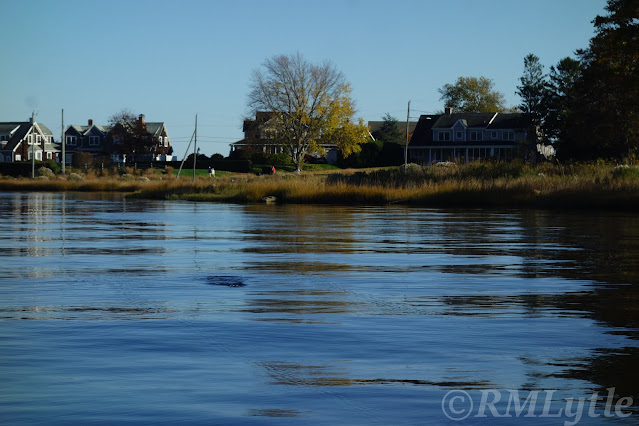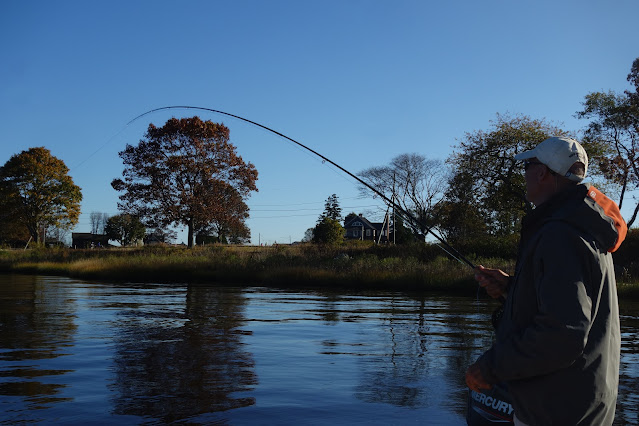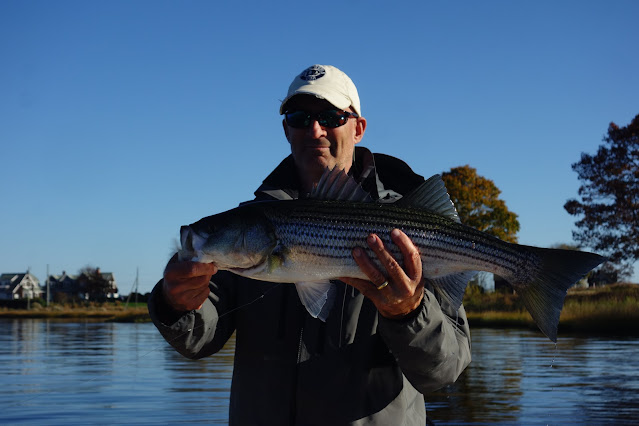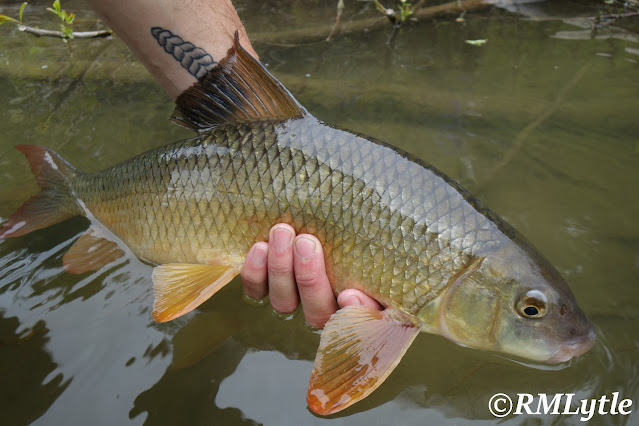November, 2022. Angler: Mark Alpert
Monday, July 24, 2023
Crease Fly Stripers (Photo Essay)
Wednesday, July 5, 2023
Impromptu Redhorse Hunt
I was in Vermont for my younger brother's graduation, and only for a couple days. Fishing time was limited. My partner, Haley, was also with me. Options weren't as broad as they might otherwise be. Contingencies aside, when I'm somewhere I don't always get to be I'm going to fish at least a little. With finite time and a limited number of options within hitting distance, my friend Drew Price pulled through for me with a close to sure bet for shorthead redhorse. Having only caught one lone smallmouth redhorse in western Pennsylvania and being interested in the rest of the Moxostoma genus, this seemed as good an option as any. So I dragged my very tolerant girlfriend with me to a Lake Champlain tributary to look for a new species.
Redhorse are a diverse genus of North American suckers that includes more than 20 distinct species. Moxostoma are spread across over a substantial chunk of the Eastern half of the continent. Like their other sucker relatives they are often underappreciated, poorly treated, and frequently badly managed by state fisheries agencies. As in all cases, I just don't get that- they're cool as hell. redhorse are native, they fight hard, live in beautiful rivers and creeks, are often hard to fool, and look darned cool. They don't taste half bad either. What isn't to love? Any time redhorse are an option I perk up. I adore targeting them on the fly and don't get to at all often enough. My confidence in success bordered on certainty given Drew's report and we jetted out the door the moment it looked like we might have time. The drive south to the tributary he suggested was about 45 minutes and we only had a few hours to work with so time was of the essence.
The stream was a lightly-stained freestone over dark grey calcareous shale and blueish limestone from the Ordovician period. Where the stream cut to the bedrock, the step-like fractures allowed sand and gravel from different bedrock layers upstream to collect, and along with algae growth made the riverbed became a rainbow of pastel coloration. Some stretches meandered and featured deep pools with some mud bottom. I was keeping my eyes sharply peeled for any red tails waving in the riffles. The first fish I saw were big smallmouth bass on beds. I half heartedly presented a small Ausable Ugly to the first large one I saw and she ate. The fight was pretty intense as the fish tried to lodge under every large rock in the run.
I continued upstream a little ways, catching a few more bass and a very large white sucker. It was nice to get a native species but I was getting a little worried that the redhorse had managed to make their way out of the system already since I wasn't seeing them. A text from Drew changed the trip... I'd gone the wrong way!
Counter to my instinct to walk upstream, we turned tail and headed down. It didn't take long to encounter a couple of pools absolutely packed full of redhorse. They stood out quite well in both the pools and the riffles, though I found the fish in the shallow fast water entirely too finicky. The pools were more comfortable territory though- I already know how to catch suckers holding in pools, that's pretty much my typical white sucker fishing scenario back at home. I rigged up with an indicator and left on the Ausable Ugly. The redhorse weren't exactly obliging, but after some time I did convince one to eat: another new species thanks to Drew. He's been responsible for two so far this year.
 |
| Lifelist fish #190: Shorthead redhorse, Moxostoma macrolepidotum. Rank: Species |
After bringing the lifelist up to 190, I relaxed a bit and went about enjoying the action. I caught three more shortheads; one with a couple hangers on in the form of sea lamprey. Unlike the ocean, where lamprey parasitize large fish that are capable of handling the the blood loss, in landlocked environments they can be a big problem to native species. I removed both lamprey from this redhorse accordingly.
























